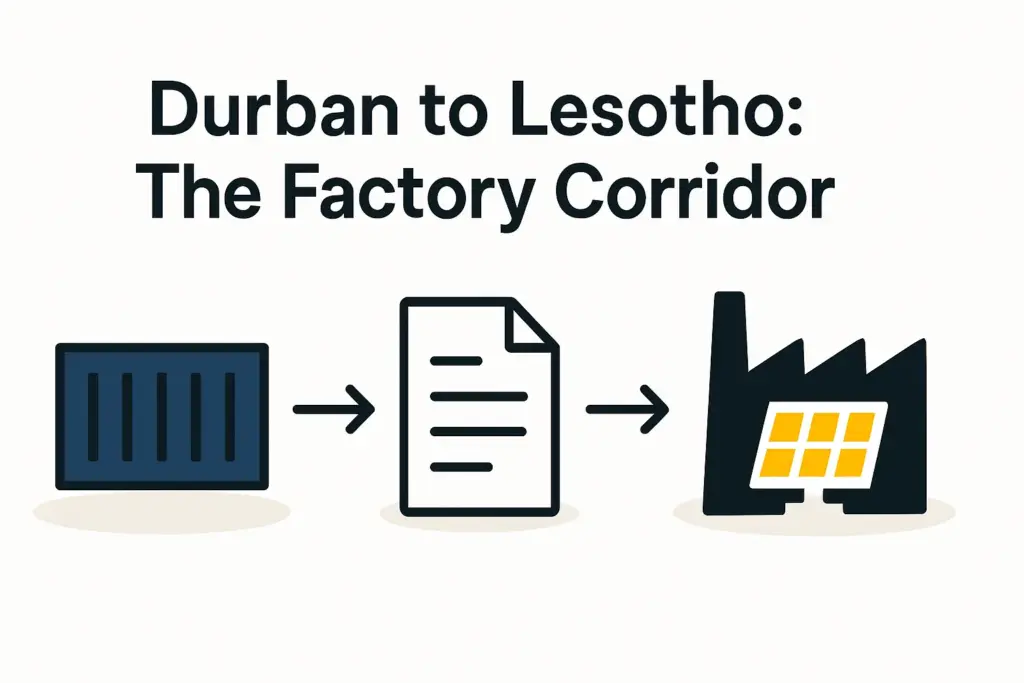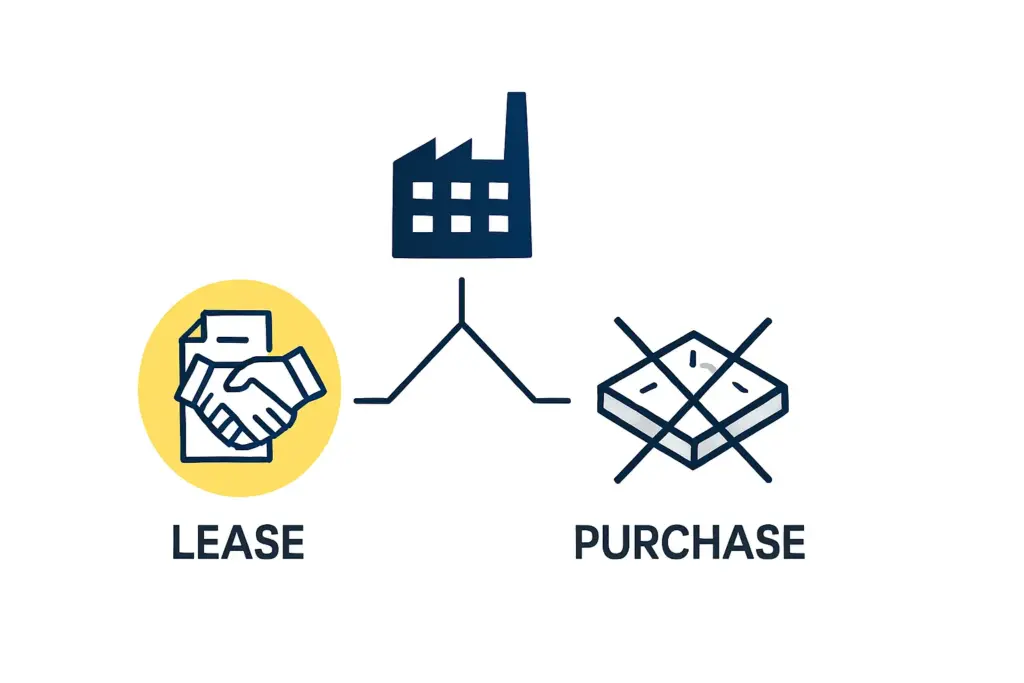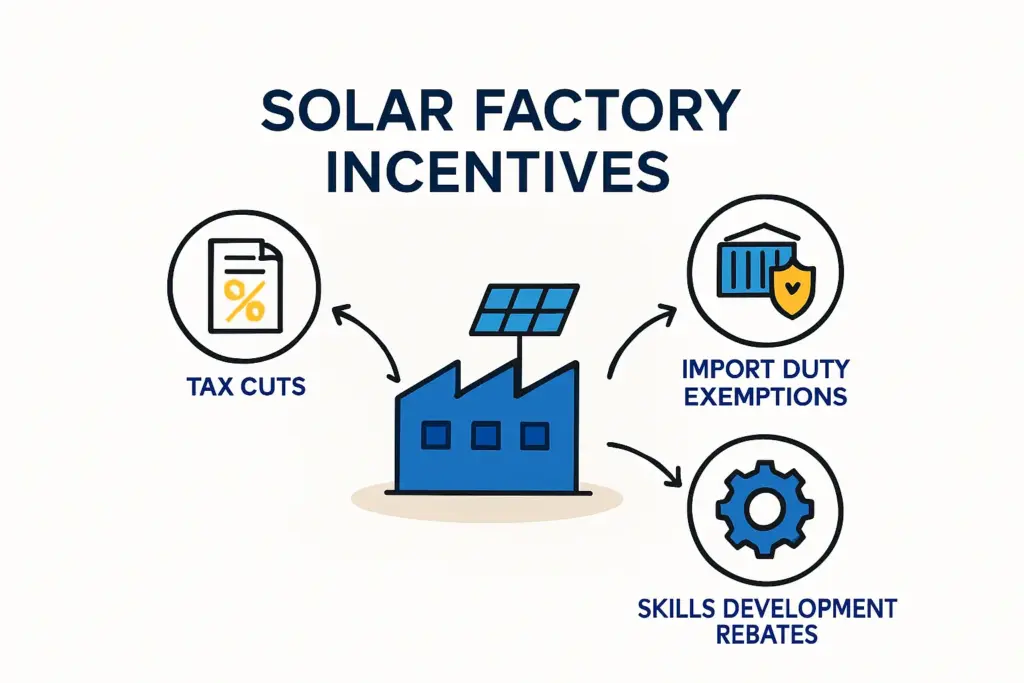Discover comprehensive insights into the statistics, market trends, and growth potential surrounding the solar panel manufacturing industry in Lesotho
- Climate.top (n.d.). Cli Sunshine & Daylight Hours in Maseru, Lesotho. Retrieved July 23, 2024, from https://www.climate.top/lesotho/sunlight/
- IRENA – International Renewable Energy Agency (2023, August 08). Energy profile Lesotho. Retrieved July 23, 2024, from https://www.irena.org/-/media/Files/IRENA/Agency/Statistics/Statistical_Profiles/Africa/Lesotho_Africa_RE_SP.pdf
- Global Petrol Prices (n.d.). Lesotho electricity prices. Retrieved July 23, 2024, from https://www.globalpetrolprices.com/Lesotho/electricity_prices/
- Afrobarometer (2024, June 7). AD811: Basotho say government is doing a poor job of providing a reliable electricity supply. Retrieved July 23, 2024, from https://www.afrobarometer.org/publication/ad811-basotho-say-government-is-doing-a-poor-job-of-providing-a-reliable-electricity-supply/
- Get.transform (2024, July 01). Lesotho Country Window: Energy System Transformation Outlook (ESTO). Retrieved July 23, 2024, from https://www.get-transform.eu/wp-content/uploads/2024/07/GET.transform-Lesotho-ESTO-July-2024.pdf
- International Trade Organization (2024, February 02). Lesotho – Country Commercial Guide. Retrieved July 23, 2024, from https://www.trade.gov/country-commercial-guides/lesotho-renewable-energy
- MRC Group (2018, August). Electricity Supply Cost of Service Study – LEWA Lesotho. Retrieved July 23, 2024, from https://nul-erc.s3.amazonaws.com/public/documents/reports/cost-of-service-study-1543817960.pdf
- Journal of energy in Southern Africa (2021, February). Lesotho electricity demand profile from 2010 to 2030. Retrieved July 23, 2024, from https://scielo.org.za/scielo.php?pid=S1021-447X2021000100004&script=sci_arttext
- Statista (2023, June 20). Share of renewable energy in electricity capacity in Lesotho from 2012 to 2021. Retrieved July 23, 2024, from
- Statista (2024, January 31). Share of individuals with a reliable supply of electricity in Lesotho in 2020. Retrieved July 23, 2024, from https://www.statista.com/statistics/1316146/share-of-individuals-with-a-reliable-supply-of-electricity-in-lesotho/
- Power Technology (2024, May 31). Power plant profile: Lesotho Solar PV Park, Lesotho. Retrieved July 23, 2024, from https://www.power-technology.com/data-insights/power-plant-profile-lesotho-solar-pv-park-lesotho/
- The Lesotho Electricity Generation Company (2022, November 22). 70MW Solar Power Project. Retrieved July 23, 2024, from https://www.legco.co.ls/
- Eco- Business (2023, June 6). The solar kiosks powering Lesotho’s rural communities. Retrieved July 23, 2024, from https://www.eco-business.com/news/the-solar-kiosks-powering-lesothos-rural-communities/
- World salaries (n.d.). Average Solar Energy Systems Engineer Salary in Lesotho for 2024. Retrieved July 23, 2024, from https://worldsalaries.com/average-solar-energy-systems-engineer-salary-in-lesotho/
- World salaries (n.d.). Average Solar Photovoltaic Installer Salary in Lesotho for 2024. Retrieved July 23, 2024, from https://worldsalaries.com/average-solar-photovoltaic-installer-salary-in-lesotho/
- Worldometer (n.d.). Lesotho Population. Retrieved July 23, 2024, from https://www.worldometers.info/world-population/lesotho-population/
- African land (n.d.). Discover your next development opportunity: land for sale in Maseru, Lesotho. Retrieved July 23, 2024, from https://african.land/blog/article/discover-your-next-development-opportunity-land-for-sale-in-maseru-lesotho-b678
- Lesotho Electricity and Water Authority (LEWA) (n.d.). Approved electricity tariffs & charges. Retrieved July 23, 2024, from https://www.lewa.org.ls/approved-electricity-tariffs-charges/
- Lesotho Electricity and Water Authority (LEWA) (n.d.). Approved Water Tariffs & Sewerage Charges. Retrieved July 23, 2024, from https://www.lewa.org.ls/approved-water-tariffs-sewerage-charges/
- Eris property group (n.d.). Retail Properties To Let in Maseru, Lesotho. Retrieved July 23, 2024, from https://www.eris.co.za/results/retail/to-let/maseru/
- Statista (2024, March). Property Insurance – Lesotho. Retrieved July 23, 2024, from https://www.statista.com/outlook/fmo/insurances/non-life-insurances/property-insurance/lesotho
- UN Capital Development Fund (UNCDF) (2020). The Making Access Possible Programme. Retrieved July 23, 2024, from https://www.undp.org/sites/g/files/zskgke326/files/publications/UNDP-UNCDF-Lesotho-Energy-and-the-Poor.pdf
- Africa Energy Portal (n.d.). Lesotho – Profile. Retrieved July 23, 2024, from https://africa-energy-portal.org/aep/country/lesotho
- Delegation of the European Union to the Kingdom of Lesotho (2024, February 14). Renewable Lesotho. Retrieved July 23, 2024, from https://www.eeas.europa.eu/delegations/lesotho/renewable-lesotho_en?s=103
- Map Africa (n.d.). Lesotho – Mafeteng Solar PV Project. Retrieved July 23, 2024, from https://mapafrica.afdb.org/en/projects/46002-G-LS-FZ0-PRE-001
- Lesotho Renewable Energy-Based Rural Electrification Project (LREBRE) (2015). DRAFT Terminal Evaluation Report. Retrieved July 23, 2024, from https://www.gefieo.org/sites/default/files/documents/projects/tes/1245-terminal-evaluation.pdf
- Document of The World Bank (2020, June 25). Lesotho scaling up renewable energy program investment plan. Retrieved July 23, 2024, from https://documents1.worldbank.org/curated/en/973931593508357535/text/Lesotho-Scaling-Renewable-Energy-Program-SREP-Investment-Plan-IP-Project.txt
- Department of Energy (2024, January 19). Support to the energy sector reform in Lesotho: skills audit and developing capacity building plan for doe. Retrieved July 23, 2024, from https://www.doe.gov.ls/post/view/59
- Retrieved July 23, 2024, from https://repp.energy/project/ha-makebe-lesotho/
- Retrieved July 23, 2024, from https://www.miga.org/sites/default/files/2022-07/Lesotho%20PV%20Plant%20Final%20ESIA%20Report%20updated.pdf

















